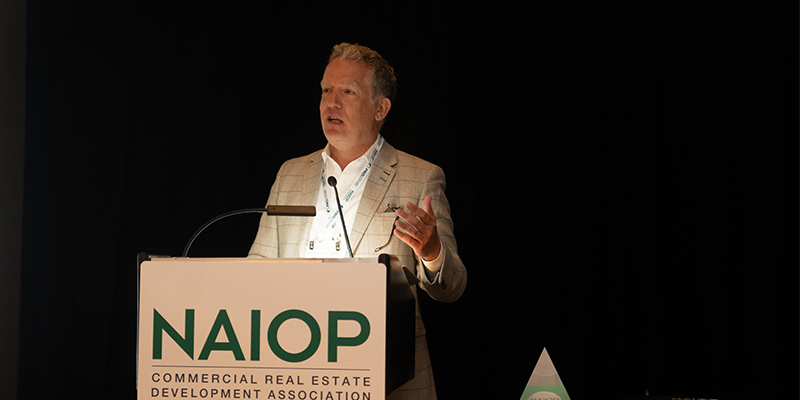Last month the U.S. Securities and Exchange Commission (SEC) released a proposed rule designed to increase transparency and standardize the information that public corporations disclose regarding climate-related risks. To a great extent, the SEC’s action tracks what has already been happening at major corporations, many of which have publicly committed to ambitious greenhouse gas (GHG) emissions reduction goals and embraced environmental sustainability as a core part of their mission and their corporate identity. This includes many commercial real estate actors, from the very large real estate investment trusts (REITs) to smaller private companies and developers. Many are already providing climate-related information and GHG emissions measures for their shareholders and the public.
Nevertheless, complying with the requirements of the SEC’s proposed rule as drafted will present serious operational challenges, even for those who are leaders in the effort to reduce their GHG emissions. And many businesses under the impression this disclosure rule will not impact their operations may be in for a surprise, because the larger public corporations subject to the SEC’s disclosure requirements will need information from those with whom they do business in order to comply with the rule’s requirements.
The SEC’s main goal in issuing its “Enhancement and Standardization of Climate-Related Disclosures for Investors” rule is to provide greater consistency and increase transparency for investors regarding information on a company’s GHG emissions and climate-related risks. A lack of standardization in how information is reported makes it difficult for investors to understand the performance of a company compared to another.
Making information useful to the investor is in fact the major rationale used by the SEC to assert its regulatory authority in this area. As stated in the preamble to the rule, investors “need information about climate-related risks — and it is squarely within the Commission’s authority to require such disclosure in the public interest and for the protection of investors — because climate-related risks have present financial consequences that investors in public companies consider in making investment and voting decisions.”
An SEC Fact Sheet sets forth some of the information that will be required to be provided with a company’s registration statements and periodic reports, such as their annual Form 10-K filings. These include information regarding climate-related risks that are reasonably likely to have a material impact on its business, results of operations, or financial condition. A company will also have to provide information on its GHG emissions, as well as on its climate-related targets and goals, among other things.
For GHG emissions, the SEC requires information for three different measures, classified as scopes:
- Scope 1: direct GHG emissions that occur from sources owned or controlled by the company;
- Scope 2: indirect GHG emissions from purchased electricity and other forms of energy;
- Scope 3: indirect emissions from upstream and downstream activities in a company’s value chain.
It is primarily in the area of Scope 3 emissions that concerns are being raised. These include emissions that result from the company’s activities in producing a product or providing a service, but are generated from sources not owned or controlled by the company. Thus, emissions from the company’s suppliers, vendors and customers, and a number of other categories of activities, would be included under scope 3. The impact of the SEC’s disclosure rule is therefore much broader that just the regulated companies. If a private company, for example, is doing business with a public company subject to the SEC’s disclosure rule (say, Amazon or Walmart), then they will be asked to provide the required climate-related and GHG emissions information to the regulated company. So even if they are not covered by the rule directly, they could be doing business with others that are.
Scope 3 emissions are required to be disclosed if they are deemed to be materially relevant to the business, or if the company has set forth its own GHG emissions reductions targets that include Scope 3 emissions. Anticipating the difficulty that companies will have in collecting GHG emissions information from vendors and suppliers, the SEC provides a safe harbor from certain forms of liability for Scope 3 emissions disclosures.
But particularly for real estate, thorny questions and gray areas remain. What is “material” for Scope 3 purposes for one company may not be material for another, for example, for purposes of determining whether Scope 3 measures are required. For submetered buildings where individual tenant energy use can be measured, gathering the required information may be straightforward, but not all buildings have that capability. What if a commercial tenant subject to the SEC disclosure rule requires information from a landlord that does not have the requisite data systems in place? A company’s 10K filing is due in the first quarter of its fiscal year, but the company may not have complete energy usage data for the four quarters of the prior year until after the filing deadline. Will using estimates open the company up to civil liability for violating SEC disclosure rules, and will there have to be subsequent filings? Along the lines of “no good deed goes unpunished,” will the SEC’s requirement that companies which have publicly committed to ambitious greenhouse reduction goals, and are now subject to greater scrutiny of their progress on these goals, create a disincentive for other companies to undertake stretch goals?
The SEC will be grappling with these questions, and Congress may demand further changes. But there is little doubt that investors want more consistent, standardized reporting of climate risk information. And there is also little doubt that there will be added costs involved with additional reporting. Legal challenges will arise, arguing that the SEC exceeded its authority. But regardless of what ultimately happens with this particular rule, the broader societal expectations and investor demands that companies take measures to address climate change concerns will remain.
For those looking to the future of the commercial real estate industry and its role in society, the question regarding disclosing sustainability and GHG reduction information is not whether it is the right thing to do, but rather how to do the thing right.








